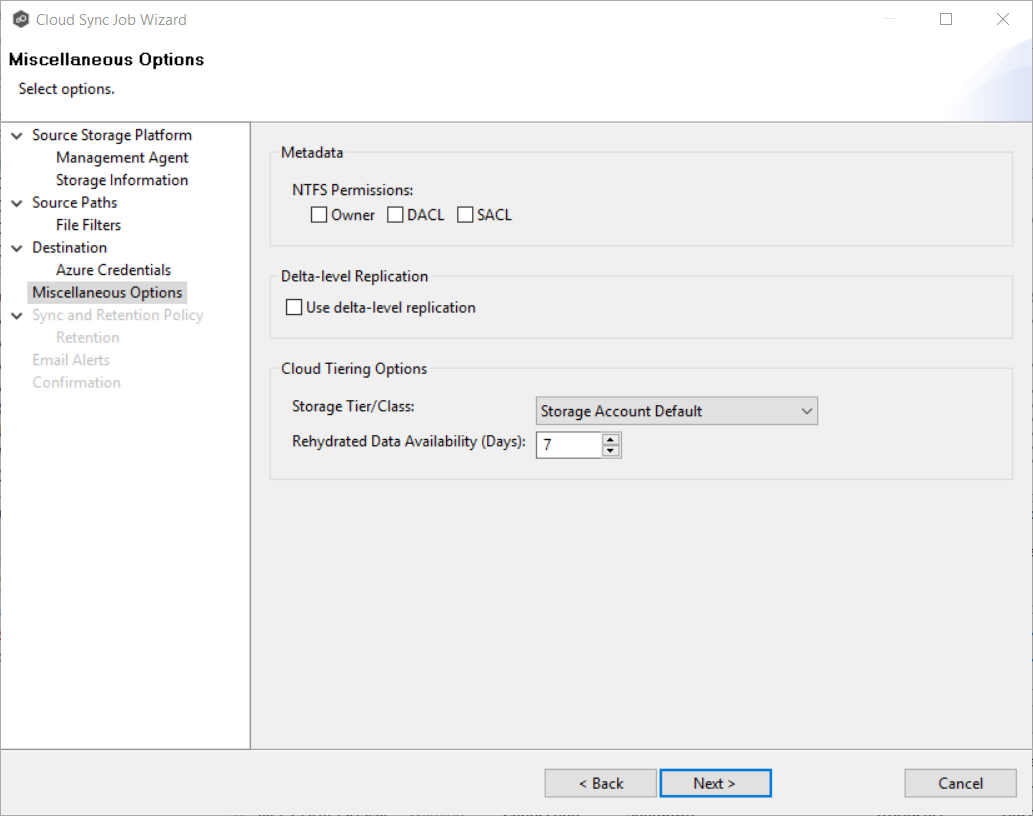The Miscellaneous Options page displays options for metadata replication, delta-level replication, and cloud tiering.
1.Select the options to apply to this job.

NTFS Permissions |
If you want NTFS permissions metadata included in the replication, select the elements to include: •Owner – The NTFS Creator-Owner who owns the object (which is, by default, whomever created it). •DACL – A Discretionary Access Control List identifies the users and groups that are assigned or denied access permissions on a file or folder. •SACL - A System Access Control List enables administrators to log attempts to access a secured file or folder. It is used for auditing. |
Delta-level Replication |
If you want delta-level replication, select this check box. Delta-level replication enables Cloud Sync to transmit only the bytes/blocks of a file that have changed instead of transferring the entire file. This results in much lower network bandwidth utilization, which can be an enormous benefit if you are transferring files over a slow link. |
Storage Tier/Class |
Select a storage tier. If you do not select a tier, it will default to the tier you configured on your Azure Storage account. Azure Storage offers three storage tiers for blob object storage so that you can store your data most cost-effectively depending on how you use it: •Azure Hot Storage Tier is optimized for storing data that is accessed frequently. •Azure Cool Storage Tier is optimized for storing data that is infrequently accessed and stored for at least 30 days. •Azure Archive Storage Tier is optimized for storing data that is rarely accessed and stored for at least 180 days with flexible latency requirements (on the order of hours). The archive storage tier is only available at the blob level and not at the storage account level. To read data in archive storage, Cloud Sync must first change the tier of the blob to hot or cool. This process is known as rehydration and can take up to 15 hours to complete. Rehydrated data remains in hot or cool storage for a specified number of days before Cloud Sync automatically returns it to archive storage. |
Rehydrated Data Availability (Days) |
Rehydrated data is automatically returned to archive storage after a specified period. Enter the number of days for rehydrated data to remain in hot or cool storage before returning to archive storage. The default is seven days. |
2.Click Next.